

frank rock
Partner in Harvest Resources, Ireland's leading People Development Specialists. Avid reader, innovation expert and business & sales coach.
Kelley and Conner's Emotional Cycle of Change - from MindTools.com. Keeping Going When You Make a Voluntary Change © iStockphotohh5800 You're likely to experience a cycle of emotions when you make a change. Think back to the last time you made a change in your life. Perhaps you started a new job or enrolled in a night school program. Chances are, you went through some ups and downs as you went through this process. Researchers have noted that this is common, and that many of us go through a predictable cycle of emotions when we choose to make a change.
About the Tool Don Kelley and Daryl Conner developed their Emotional Cycle of Change model in the mid-1970s, and they outlined it in the "1979 Annual Handbook for Group Facilitators. " The cycle has five stages, shown in figure 1 below. Stage 1: Uninformed optimism. Figure 1 – The Emotional Cycle of Change. Kelley and Conner's Emotional Cycle of Change - from MindTools.com. Legacy%20Write%20up.
7 Factors of Great Office Design. Smart companies understand that workspaces are a business tool.
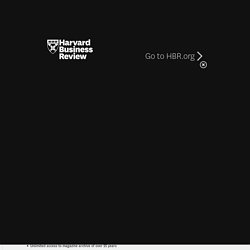
An office environment reflects and reinforces a business’s core values, through the placement of different teams and functions and design elements that reflect culture, brand, and values. For example, we’ve seen an explosion of open office layouts, in part because openness, transparency, and collaboration are some of the attributes companies strive for today. Sometimes these designs work well; however, research shows that this collaborative push may be too much of a good thing. Increasingly, people are rediscovering the value of quiet and focus and asking for spaces where they can concentrate. In fact, collaboration and quiet are two ends of a continuum with a range of in-between work modes — each with an optimal setting. This is easier said than done, however. To better understand how these work, try the exercise below on your own or with your team.
There are a variety of ways you can use this exercise beyond one meeting. Morgan Stanley to Rate Employees With Adjectives, Not Numbers. Photo For years, employees were graded in part on a numerical scale that rated them from 1 to 5.
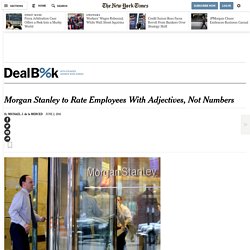
Now, the Wall Street firm plans to change those evaluations — by taking away the numbers. Morgan Stanley told its staff on Thursday that it was overhauling how employees are assessed in several ways, including by discarding the number scale in favor of lists of up to five adjectives. The changes are the latest effort by a stalwart of corporate America to change how it evaluates employees. Some companies, like Microsoft and Morgan Stanley’s longtime rival Goldman Sachs, have made their own changes, which have also included getting rid of numerical ratings. Others, like the consulting firm Accenture, have decided to do away with the annual performance review altogether.
For Morgan Stanley, annual reviews are still helpful in determining how well employees do their jobs. Evaluators will now be asked to list up to five adjectives that describe the employees. Continue reading the main story. New product development and feasibility studies. New product/service development and feasibility studies When asked outright, many people have a difficult time communicating what product features they value most.

Determining what features are important to consumers, dealers or other buyers is a vital part of the product development decision-making process. How can your business effectively determine important product or service features? Market research is an essential tool that increases the likelihood of success. Our product development market research can help you: Determine the level of need for your products or servicesDefine and prioritize featuresIdentify acceptable price pointsPinpoint ideal market entry timingdentify appealing packagingDetermine the best distribution methods At Vernon Research, we are well known for our expertise in testing customer receptiveness to new products, ideas, concepts, features and supporting services.
Questions that Vernon Research can help you answer: Assessing The Feasibility Of A New Product. During the feasibility stage of product development, a company needs to gather information and perform analysis to assess the feasibility or develop the business case for a new product.
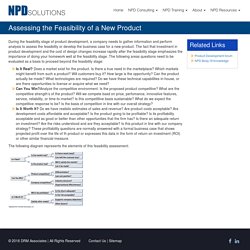
The fact that investment in product development and the cost of design changes increase rapidly after the feasibility stage emphasizes the importance of doing your homework well at the feasibility stage. The following areas questions need to be evaluated as a basis to proceed beyond the feasibility stage: Is It Real? Does a market exist for the product. Is there a true need in the marketplace? The following diagram represents the elements of this feasibility assessment: What Makes Work Meaningful — Or Meaningless. References (32) 1.
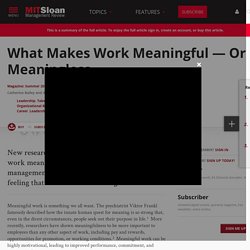
V.E. Frankl, “Man’s Search For Meaning” (Boston: Beacon Press, 1959). 2. W.F.
Walt Disney’s 16 unconventional rules for getting clients. Walt Disney’s 16 unconventional rules for getting clients Most people forget that before starting the Walt Disney Company we all know today, Walt Disney was actually a freelance cartoonist.
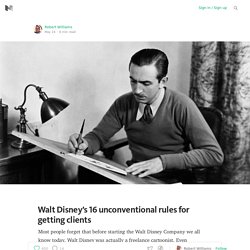
Even throughout the rest of his career he met with distributors and clients in one-on-one sales situations. He had to be constantly selling himself — and his vision — to make his ideas come alive.